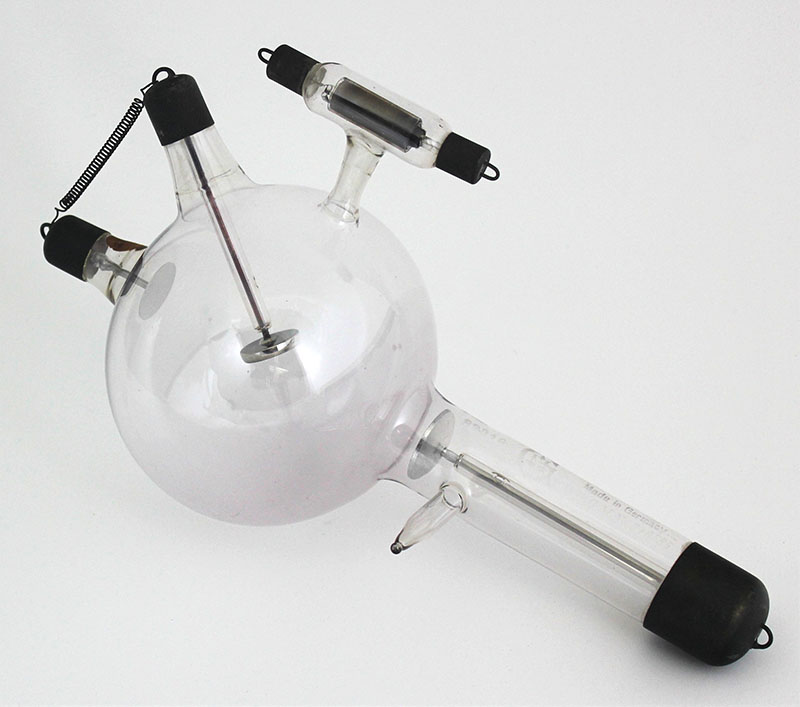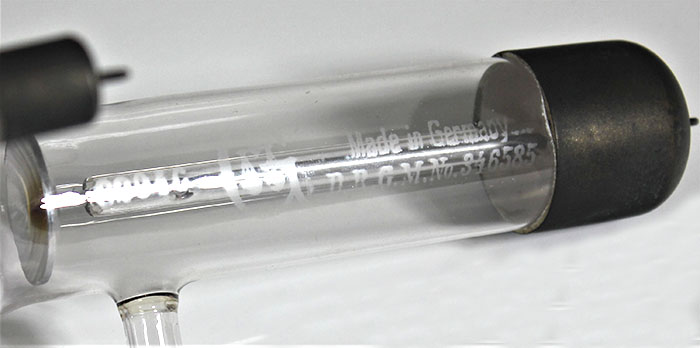Gundelach Light Anode Tube (ca. 1910)

This fairly small bi-anode tube was manufactured by the Gundelach company of Gehlberg, Germany.
The circular platinum target (anticathode) is in the center of the bulb while the cupped aluminum cathode is positioned just inside the glass arm connected to the lower right side of the bulb. The anode, a thin flat aluminum disk, is located where the short glass arm is connected to the left side of the bulb.
The regulator for controlling the pressure of the residual gas in the tube is attached at the top of the bulb (ca. 1 o'clock in the photo).
This type of tube had no specific application. It could have been used in diagnostic imaging or therapy, but could not be operated with high currents over extended periods.

In the above photo, the company logo, a scale hanging from the inside of a large "G," can be seen etched on the stem of the tube.
The Gundelach company was founded in 1852 by Emil Gundelach, a glass blower. Prior to Rontgen's discovery of X-rays the company offered a variety of Crookes and Geissler tubes. They began manufacturing tubes specifically designed for X-ray production within a few month's of the discovery in 1896 and they continued producing X-ray tubes until the late 1920s.
Size: Approximately 12" long with 5" bulb diameter
